The soccer revival that led Canada to the verge of the World Cup
Jonathan Osorio stood inside Toronto FC’s training facility this month and was invited to think big. What would it mean to Canadian soccer if the men’s national team reached the World Cup?
Some players would have deflected the question, citing work left to do. The Canadian midfielder answered head-on.
“That would be the beginning of the change of how football is perceived in this country,” Osorio said.
“Among youth, it’s the most played sport. Pretty soon, it will be the most watched sport. That’s my prediction. It starts with us making the World Cup, and then it continues with the team being successful after that. I think we have everything in place for that to happen: the structure, and we definitely have the crop of players.”
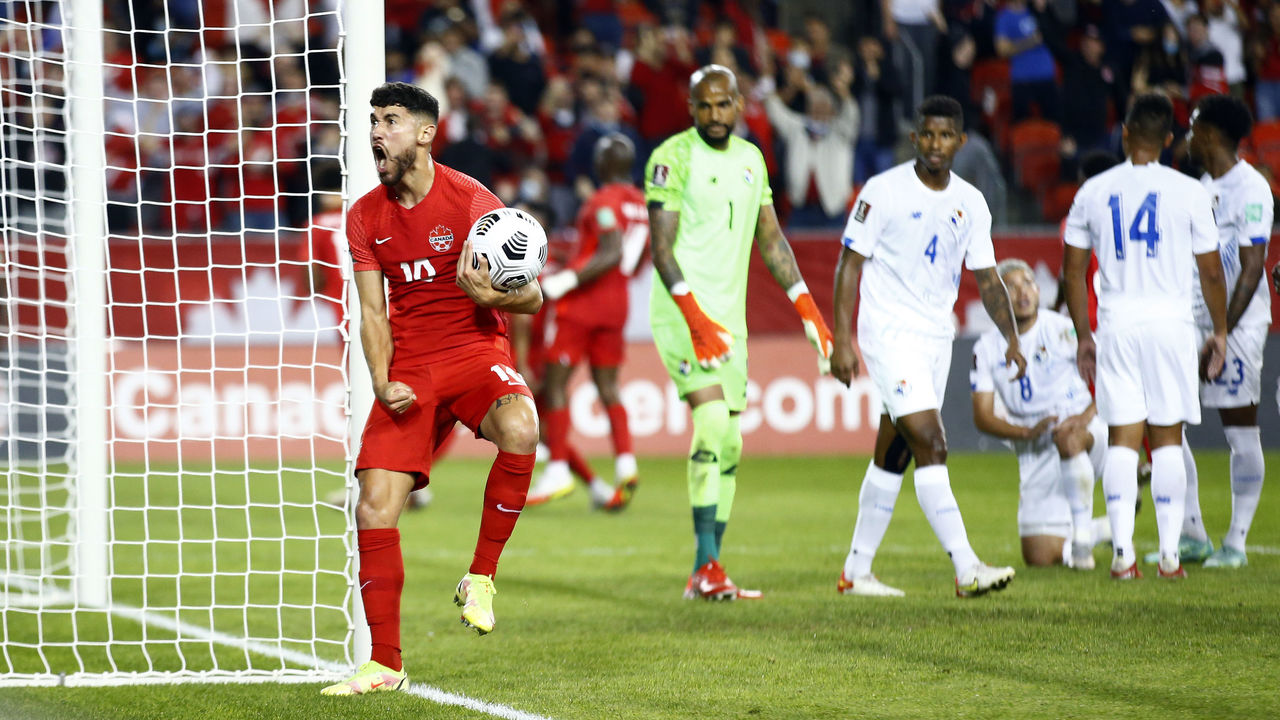
Barring calamity, Canada will play in Qatar in November. They lead CONCACAF’s qualifying table through 11 matches, conceding only five goals in the round. Strikers Cyle Larin and Jonathan David have scored as many times apiece.
Milan Borjan posted three clean sheets in the last international window as Alphonso Davies, sidelined due to myocarditis, celebrated the wins on Twitch. When Davies is healthy, the Canadians get to lean on a transcendent star, the swaggerful left back whose speed and on-ball wizardry are unparalleled in the region.
To make it to Qatar, the Canadians need two points from three fixtures that remain: at Costa Rica on Thursday, against Jamaica in Toronto on Sunday, and next Wednesday at Panama. Zero points could suffice if Panama and Costa Rica don’t win out.
Qualifying would make the world aware of Canada’s soccer renaissance. The men slumped as low as No. 120 in the FIFA rankings in 2017, the year before John Herdman was hired as manager to engineer a turnaround. Herdman’s side ranks No. 33 now, evoking memories of the fabled 1986 team – Canada’s last and only World Cup qualifier.
Just like that, Canada resembles a soccer nation. The women’s team that Herdman coached to Olympic bronze medals in 2012 and 2016 broke through for gold last summer in Tokyo. Supporters foresee the men competing for wins in Qatar and at home in 2026, when Canada co-hosts the World Cup with the United States and Mexico.
When that trio convened to bid for the tournament, Canada was the continent’s weakling. Now Osorio and his teammates say they want to make a statement in Qatar, vocalizing the self-belief and fearlessness that, they tend to agree, stem from Herdman.
“He’s a transformational leader. He oozes charisma. He’s put together this incredible vision. He’s sold everybody on it: that the impossible is possible,” said Terry Dunfield, the OneSoccer broadcast analyst who played for the national team in the early 2010s. “When (Herdman’s game plan is) tested under pressure, there’s this incredible brotherhood that really supports that vision.”
Iconic goals and saves have highlighted the Canadians’ storybook campaign. Throughout it, they’ve earned points against all comers in different settings.
In 1-1 road draws against the region’s two giants, Canada held the U.S. to two shots on target and, courtesy of Osorio’s left boot, netted the country’s first goal since 1980 at Mexico’s Azteca cathedral. Sam Adekugbe dove into a snowbank pitchside when Larin scored on Mexico in Edmonton.
The windchill dropped to minus-14 degrees Celsius that night and hit minus-11 two months ago in Hamilton, when Canada’s one-touch passing on the counterattack sprung Larin for an early goal.
“When you’re looking at strikers at the international level, you need players who are of the moment: players who can finish a game, who can take a half-chance and put it in the net,” said Bobby Smyrniotis, Larin’s youth coach in the Toronto area and the manager of Forge FC in the Canadian Premier League.
“You look at the combination play and the verticality and his movement (on Larin’s goal in the U.S. match). His finish was world class,” Smyrniotis said. “It’s exactly what you need in the game.”
CYLE LARIN PUTS CANADA AHEAD ??
(via @onesoccer) pic.twitter.com/AN0v2tiTfO
— DAZN Canada (@DAZN_CA) January 30, 2022
When Panama visited Toronto, Davies hustled to support a couple of teammates in a shoving match, jawing with the Panamanians as a scuffle broke out by the corner flag. Then he did this:
ALPHONSO DAVIES ?? #CanMNT l ?: @onesoccer
pic.twitter.com/O9UGBBSydY— Canadian Premier League (@CPLsoccer) October 14, 2021
“You’ve got a difference-maker who can change a game in a second. You’ve got somebody who’s helped spark an entire country. That goal at BMO Field is etched in the back of the mind of every soccer fan, every sport fan, in Canada,” Dunfield said.
“I think there’s an infectiousness. There’s an energy he brings into camp. And if I’m playing against Canada and I look across and I see him in the tunnel, it’s: Oh, shit. It’s Alphonso Davies.”
Depth helped the Canadians withstand Davies’ absence during the last window, when they secured nine points without being scored on as he waited to resume training with Bayern Munich. (That finally happened last week.) Davies and his dad screamed on a Twitch stream when Larin struck in Hamilton, saluting Larin’s record 23rd goal for the men’s team.
Tajon Buchanan’s pace, like Stephen Eustaquio’s pinpoint playmaking, boosts the attack and adds dimension to Canada’s physical approach. Paul Dolan, the TSN analyst and retired national team goalkeeper, calls Herdman’s squad the most adaptable in the region. From any formation, Canada can clog the area, control possession, or step on the gas as circumstances demand.
“What epitomizes the way they’ve played is that they were in Azteca Stadium, where so many opposing teams across the federation, across the world, who’ve ever gone into that stadium against a world-class team in Mexico have just sat back and hoped that they didn’t lose,” Dolan said. “Canada was a dominant team in much of the game.”
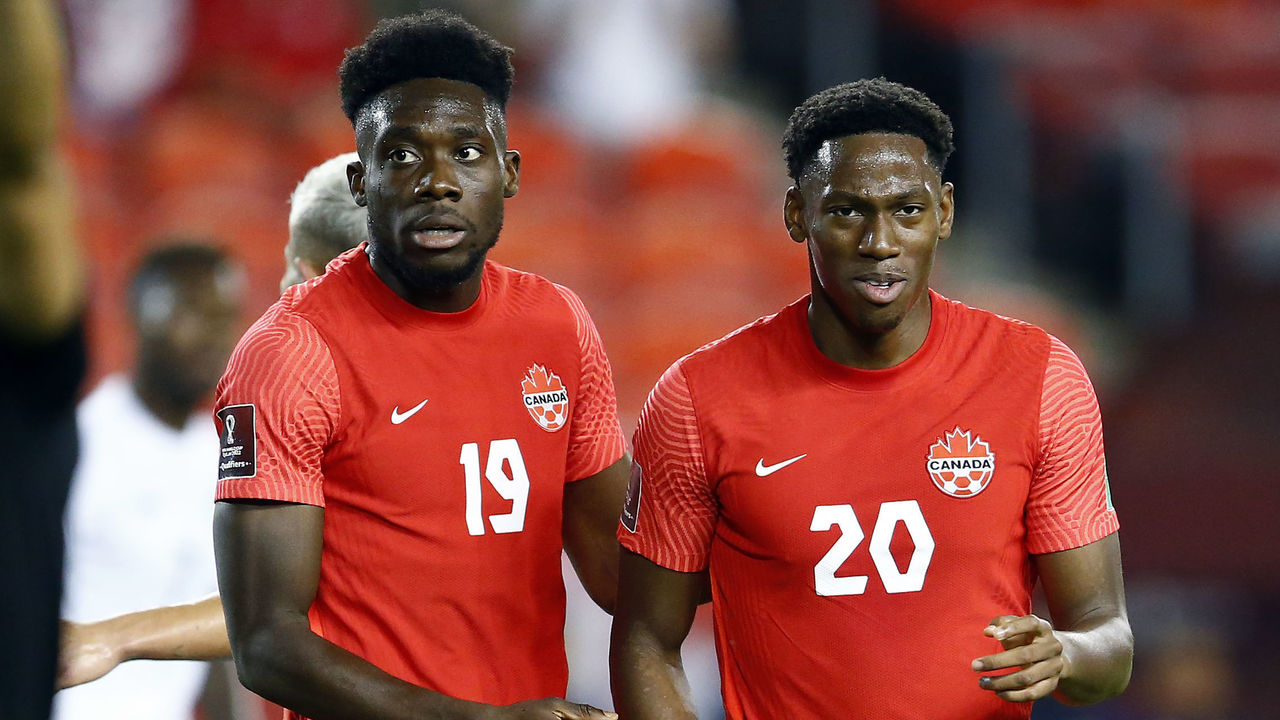
In Canada’s signature home wins, Borjan made goal-line saves to stymie Mexico in stoppage time, and he thumped his chest in Hamilton – his hometown – after rising to stuff an American header. The players he backstops hail from major European clubs: Eustaquio at Porto, David at Lille, Buchanan at Club Brugge. Osorio’s Toronto FC teams have played for and won the MLS Cup. Davies helped pace Bayern to the 2020 Champions League title.
They “instill confidence in each other,” Osorio said, when they unite under one flag.
“These young guys don’t have that sense of fear. They don’t look at other nations or other players bemused by their star power. They’re at that level themselves,” said Talal Al-Awaid, Davies’ former youth coach in Edmonton.
“All credit to John, who also pushes them and instills that belief: We’re just as good as anyone.”
The last time Canada clinched a World Cup berth, on Sept. 14, 1985, they scored off corner kicks to beat Honduras 2-1 in blustery St. John’s, Newfoundland, the country’s eastern tip. Some Honduran fans flew by mistake to Saint John, New Brunswick. The grass at King George V Park was wet and bumpy, hampering an opponent that preferred to host matches in the afternoon heat. Clearances soared over the stands and landed on parked cars.
“God love them, but it’s not a pitch that would be up to today’s standard,” said Dolan, Canada’s backup keeper that day in St. John’s. “But that’s part of the charm of the whole experience. We had the best type of home crowd we possibly could: 100% Canadian supporters right up against the touchline.
“It was, if I look back on it, the perfect setting for us to qualify.”
That Canadian squad “relied on teamwork and hard work,” Dolan said, and though Canada didn’t score at the ’86 World Cup, he held France goalless in Mexico for 79 minutes. French striker Jean-Pierre Papin hit the crossbar, flubbed a tap-in, and missed or was stopped on four more chances in the penalty area. The TV commentator suggested he change his shoes.
In the second half, someone lobbed a rooster from the bleachers that landed at Dolan’s feet. Not long before Papin finally buried a header, the keeper urged his teammates to defend a set piece hard: he was having too much fun to let up.
“I appreciate the fact that I had the presence there to actually enjoy what you’re doing in the moment,” Dolan said. “I think a lot of our players felt that same way: this was an occasion we didn’t want to bypass us.”
Cruel setbacks kept Dolan’s generation from returning to the World Cup. Guatemala bounced Canada in the penultimate qualifying round for 1990, scoring twice in Burnaby, B.C., to advance on away goals. The 1994 campaign ended in the intercontinental playoffs: Canada forced penalties in Australia, but the Aussie keeper dove to stone back-to-back Canadian attempts.
Canada’s 2000 Gold Cup triumph broke the U.S. and Mexico’s hold on the title, but mainstays of that Canadian soccer era – Dwayne De Rosario, Julian de Guzman, Kevin McKenna – never played in CONCACAF’s last World Cup qualifying stage. Needing to draw Honduras to get there ahead of 2014, Canada imploded in San Pedro Sula.
“We were close to a watershed moment. If we were able to get into the next phase of qualification, I think we could almost smell the World Cup,” said Dunfield, an unused substitute in Canada’s infamous 8-1 defeat.
“(Losing like) that wasn’t part of the plan. For many of us, this was our last shot at going to the show. I think all of us have vicariously been living through Atiba Hutchinson.”
Hutchinson is Canada’s captain and most capped player, and his contributions since the San Pedro Sula debacle helped the program rise from rock bottom. His conversion from the spot in 2014 broke Canada’s nine-match, 14-month spell without a goal. Hutchinson scored from his stomach at El Salvador in February, the game after Herdman, saluting the Hamilton crowd’s exuberance and red flares, said he finally felt he lived in a soccer country.
Is this real life? ?#CanMNT vet Atiba Hutchinson scores a ‘FIFA 22 glitch’-like goal to give his team a 1-0 lead over El Salvador ? pic.twitter.com/vazWpn0yen
— OneSoccer (@onesoccer) February 3, 2022
To Dolan, the star creators in Herdman’s team reflect what Canada lacked in ’86. To Osorio, the son of Colombian immigrants, the squad’s diversity reflects “what this country is.” Davies’ parents fled war in Liberia and he was born in a Ghanaian refugee camp. Teammates or their families came to Canada from Haiti (David), Jamaica (Larin), Trinidad (Hutchinson), Portugal (Eustaquio), Serbia (Borjan), and Nigeria via England (Adekugbe).
“It used to be our disadvantage, I think,” said Osorio, who has played for Canada since 2013. “It used to be that other (national) teams, because every person was so relatable to each other and how they grew up, they were always very close in that way. For us, we grow up in different cultures, in different households, in different ways.
“It used to be a distance. But (we) decided that this is something we have to turn into our advantage,” Osorio said. “Every culture has their little niche in the way they play. I think everybody shows it individually and it comes together as a team.”
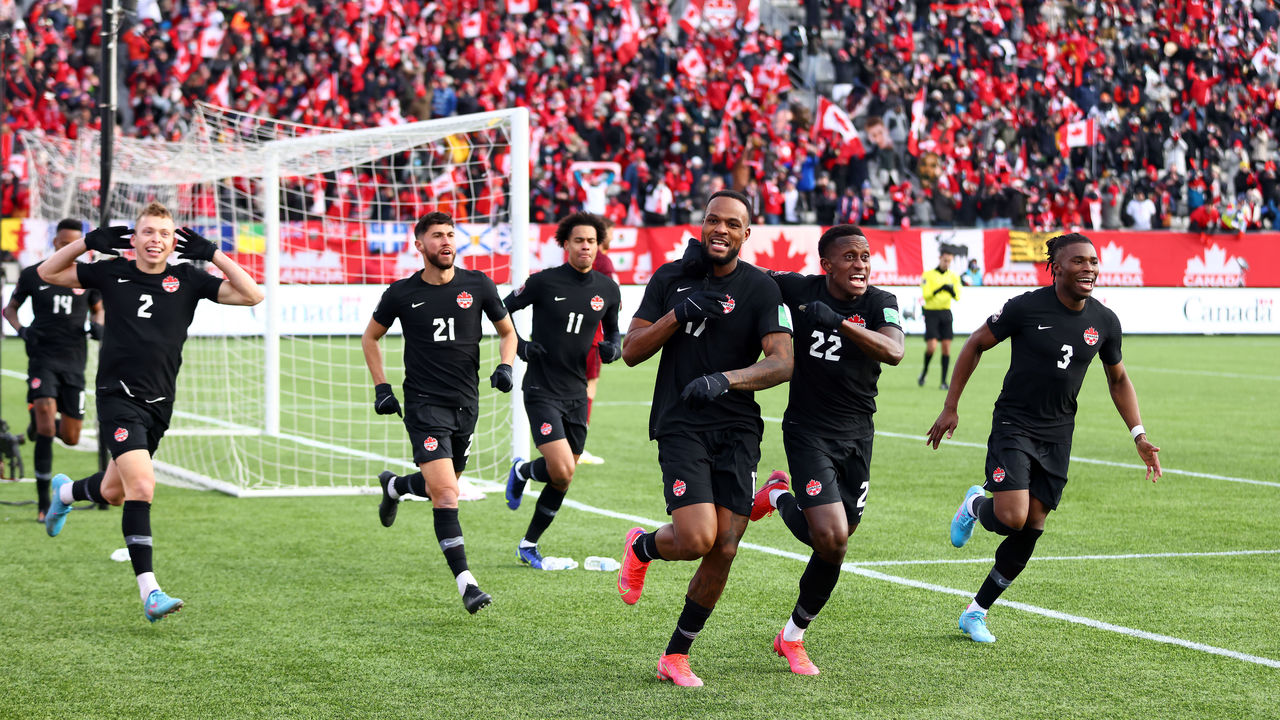


Back in ’86, Canada’s manager at the time, the late Tony Waiters, said he hoped his side’s effort in Mexico would establish “a solid base for the future.” Al-Awaid was born that May, the month the World Cup started. In Toronto, he watched Davies victimize Panama’s defense from a few rows behind the Canadian bench. His vantage point was the same in Edmonton when Mexico wavered in the snow.
Al-Awaid’s children are eight and five years old. They’ll grow up expecting Canada to rule CONCACAF. Dolan shared his own belief: After Qatar and 2026, “not qualifying for a World Cup is going to be the anomaly.”
“What’s cool is that I don’t think we’re going to be Iceland,” Dunfield said, referring to that country’s comedown from recent Euro and World Cup appearances. “I don’t think it’s just a generation. I think this is just the start. With the foundation of the CPL, MLS, the players going over to Europe, we’re becoming a football factory. There’s a conveyor belt of talent underneath these trailblazers.
“I almost have to reel myself in,” Dunfield added, “because we’re not quite there yet. Whenever I speak to anyone on the frontlines, John Herdman’s just done a great job of keeping everyone grounded: everyone focused on the next task, the next goal, and us navigating through the games at the end of the month.”
Nick Faris is a features writer at theScore.


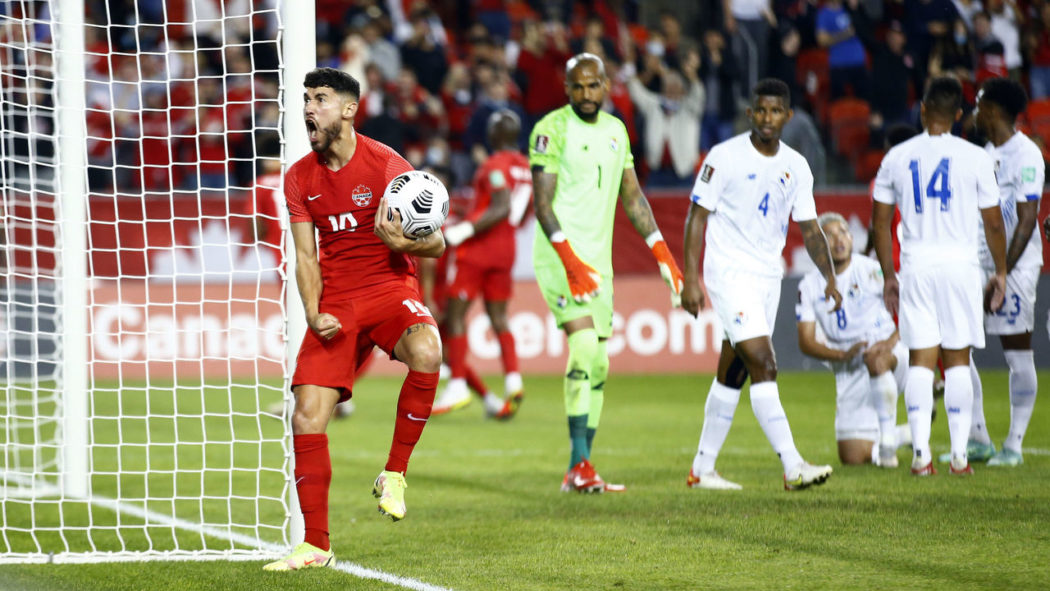


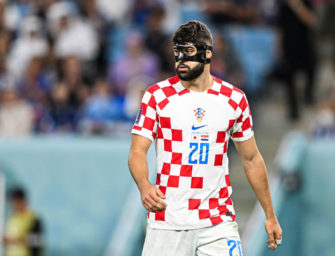
Latest Comments